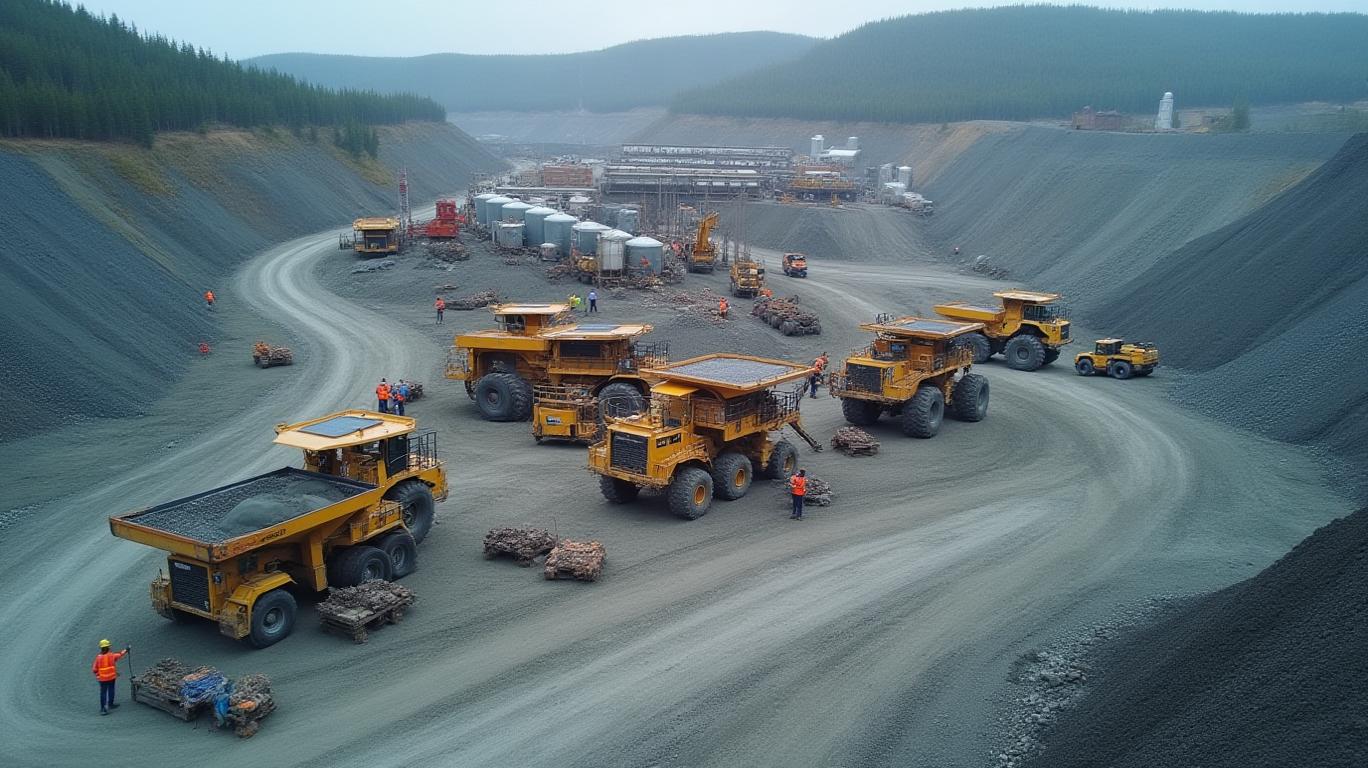Taseko Mines Navigates Near-Term Challenges to Build Future Growth
Taseko Mines Limited (TSKO) reported its first-quarter 2025 results, revealing a snapshot of a company balancing operational hurdles at its flagship Gibraltar Mine with rapid progress on its next-phase growth engine: the Florence Copper project. While near-term financials showed a net loss and production headwinds, the quarter underscored Taseko’s strategic focus on long-term value creation through project execution and cost discipline.
Gibraltar Mine: Struggling with Oxide Ores, but Costs Held Steady
The Gibraltar Mine, Taseko’s primary cash generator, faced operational challenges in Q1 that led to a 10 million-pound reduction in 2025 copper production guidance. Lower-than-expected metallurgical recoveries from oxidized ore and difficult ground conditions in the Connector pit reduced mining productivity. Despite this, the mine’s mill throughput hit 87,800 tons per day, exceeding design capacity, while copper grades and recoveries are expected to improve in the latter half of the year as higher-quality ore becomes accessible.
Key metrics:
- Copper production: 20 million pounds (vs. 22 million in Q1 2024)
- C1 cash cost: $2.26/lb (up slightly from $2.16/lb in Q1 2024)
- Strip ratio: 4.6, driving up capitalized stripping costs to $38.1 million

While the mine’s challenges are real, cost controls remain a亮点. Improved molybdenum by-product credits and lower off-property costs offset some pressures, and the company’s decision to stockpile 2.2 million tons of oxide ore for future SX/EW processing highlights a tactical shift to prioritize higher-margin production once the refurbished solvent-extraction/electrowinning (SX/EW) plant begins operations in Q2.
Florence Copper: 78% Complete, On Track for 2025 Start
The star of Taseko’s Q1 update was its Florence Copper project, which remains on schedule to begin production in late 2025. With 78% of construction complete, the project has hit milestones like drilling 80 of 90 production wells and advancing SX/EW plant installations. The $206.3 million spent to date on Florence, coupled with a $10 million final installment from its Mitsui-backed copper stream, reinforces the project’s financial backing.
However, Taseko warned that the project’s construction cost estimate may rise by 10–15% from the original $232 million, primarily due to inflation and supply chain pressures. Even so, the company maintains confidence in Florence’s economics, citing its low projected operating costs and proximity to infrastructure. Once online, Florence is expected to produce 50 million pounds of copper annually, significantly boosting Taseko’s output and free cash flow.
Financials: Hedging Shields Cash Flow, Liquidity Remains Strong
Taseko’s Q1 net loss of $29 million reflects the dual pressures of mine underperformance and capital expenditures for Florence. However, Adjusted EBITDA of $34 million and $121 million in cash highlight the company’s financial resilience. A critical factor is its hedging program: 81 million pounds of 2025 copper production are protected by collars guaranteeing a minimum price of $4.00/lb, shielding the company from near-term price volatility.
Investors should note that Taseko’s liquidity—$279 million in total available funds—provides ample buffer for construction costs and operational pivots. This financial flexibility is critical as the company transitions from construction to production mode.
Risks and Opportunities Ahead
- Near-Term Risks: Continued volatility in copper prices (current ~$3.50/lb) could strain margins, while permitting delays at projects like the Yellowhead Copper deposit or unresolved discussions with the Tŝilhqot’in Nation over New Prosperity could disrupt long-term plans.
- Growth Catalysts: Successful startup of Florence in Q4 2025 and improved grades at Gibraltar in H2 2025 could drive a $100–150 million annual cash flow boost starting in 2026.
Conclusion: Taseko’s Long Game Shows Promise
Taseko’s Q1 results reveal a company navigating short-term operational turbulence while advancing projects that could redefine its future. With $279 million in liquidity, $4.00/lb copper price protection, and Florence’s 78% completion, the company is positioned to capitalize on its growth trajectory.
While investors should monitor near-term cost pressures and copper prices, the data points to a compelling risk-reward profile. If Florence meets its Q4 2025 startup target and Gibraltar’s production recovers as expected, Taseko could deliver 20–25% annual production growth by 2026. For investors with a multi-year horizon, Taseko’s blend of execution discipline and project upside makes it a compelling pick in the copper sector.
Final Takeaway: Taseko’s strategic bets on Florence and its cost controls at Gibraltar suggest that the company is on track to transition from a mid-tier producer to a growth driver in the North American copper space. The near-term pain appears manageable, and the long-term gains could be substantial.

Comments
No comments yet